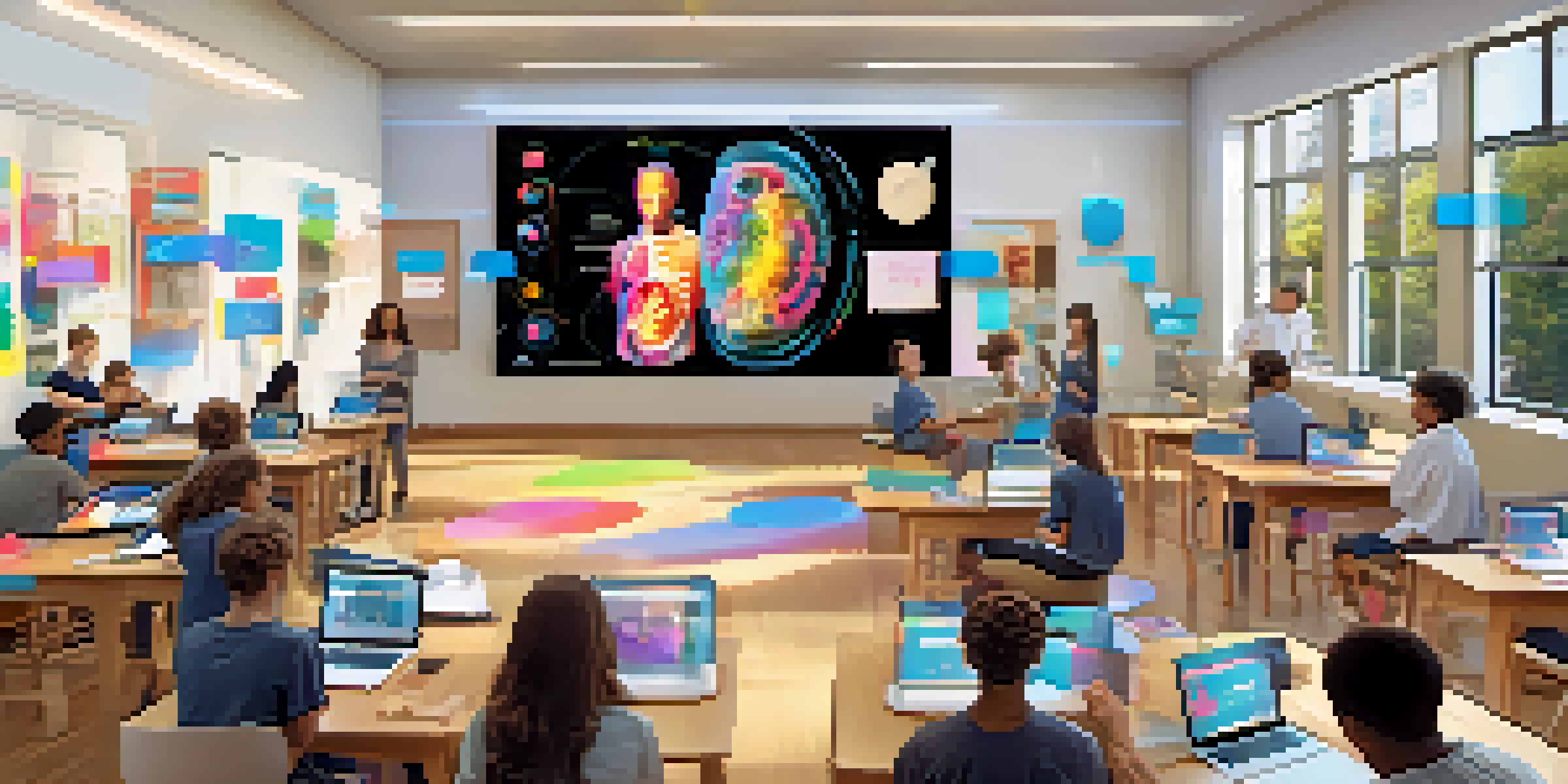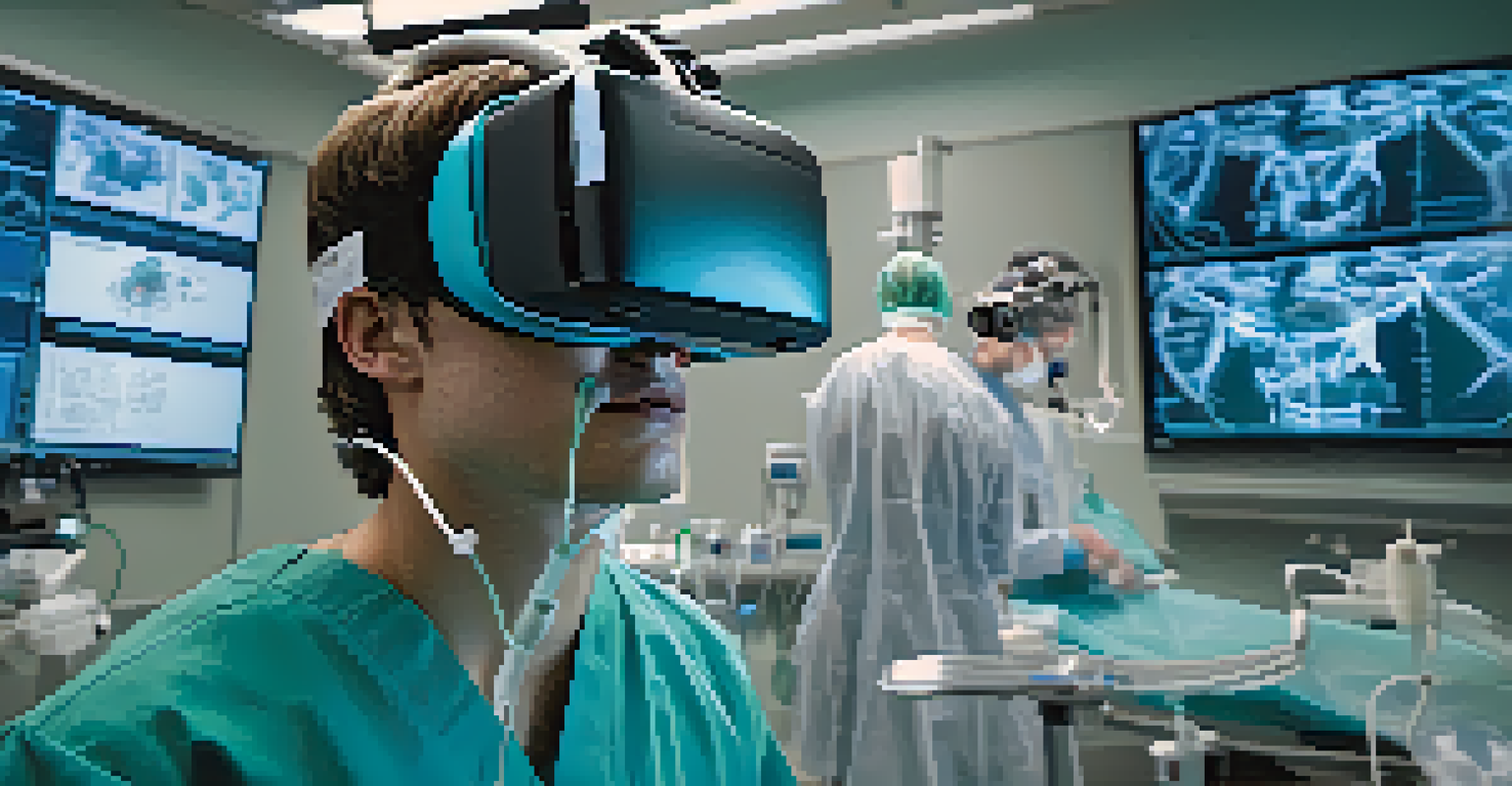The Intersection of AR and Virtual Reality in Learning

Understanding AR and VR: What They Bring to Learning
Augmented Reality (AR) and Virtual Reality (VR) are two innovative technologies that are reshaping education. AR enhances the real world by overlaying digital information, while VR immerses users in a completely virtual environment. Both serve as powerful tools to engage learners in ways traditional methods cannot.
Technology will not replace teachers, but teachers who use technology will replace those who don't.
Imagine a biology class where students can explore the human body in 3D, seeing organs and systems up close through AR. In contrast, VR could allow them to 'walk' inside a cell, experiencing its components firsthand. This level of interactivity not only makes learning more enjoyable but also aids in retention and understanding.
As these technologies continue to evolve, they offer promising possibilities for personalized learning experiences. By tailoring content to individual needs, educators can cater to various learning styles, ensuring that every student has the opportunity to thrive.
The Role of AR in Interactive Learning Environments
AR technology allows students to interact with digital overlays in their physical environment, making lessons more dynamic and engaging. For example, a history lesson could come to life with AR applications that display ancient ruins right in the classroom, enabling students to explore and learn interactively.

This immersive experience not only captivates students' attention but also fosters a deeper connection to the subject matter. When learners can visualize concepts in real-world contexts, they are more likely to remember and apply what they've learned.
AR Enhances Interactive Learning
Augmented Reality transforms education by creating dynamic learning experiences that engage students through interactive digital overlays.
Furthermore, AR promotes collaboration among students. Working together to solve problems or engage with interactive content encourages teamwork and communication skills, essential for success in today's interconnected world.
How VR Simulations Enhance Skill Development
Virtual Reality simulations are particularly effective in fields that require hands-on practice, such as medicine, engineering, and aviation. For instance, medical students can perform virtual surgeries, gaining valuable experience without the risks associated with real-life procedures.
The future of learning is not about technology; it’s about how we use technology to foster human connections and engagement.
These simulations provide a safe space for learners to make mistakes and learn from them. By repeating scenarios in a controlled environment, students can refine their skills and build confidence before facing real-world challenges.
Moreover, VR allows for standardized training experiences, ensuring that all students receive the same high-quality education regardless of their location. This is especially beneficial for remote or underserved areas where access to resources may be limited.
Challenges of Implementing AR and VR in Education
Despite their potential, integrating AR and VR into educational settings comes with challenges. One major hurdle is the cost of the technology, including devices and software that schools may struggle to afford. This can create disparities in access, particularly in underfunded institutions.
Additionally, educators need proper training to effectively utilize these tools in their teaching. Without adequate professional development and support, the full benefits of AR and VR may not be realized, leading to frustration and disengagement.
VR Simulations Build Real-World Skills
Virtual Reality provides hands-on training simulations, enabling students to practice essential skills safely and effectively in various fields.
Lastly, there are concerns about overstimulation and distraction when using these technologies. It's essential to strike a balance, ensuring that AR and VR serve as enhancements to learning rather than distractions from it.
The Future of AR and VR in Education
Looking ahead, the future of AR and VR in education is bright, with advancements promising even more engaging learning experiences. As technology becomes more accessible and affordable, we can expect an increase in its adoption across various educational settings.
Moreover, ongoing research into the effectiveness of these technologies will continue to inform best practices, ensuring that they are implemented in ways that maximize their educational potential. As educators gain more experience with AR and VR, they can create innovative curricula that leverage these tools effectively.
Finally, the collaboration between tech developers and educators will play a crucial role in shaping the future landscape of learning. By working together, they can create tailored solutions that meet the unique needs of students and enhance their educational journeys.
Real-World Examples of AR and VR in Action
Several educational institutions have already begun to harness the power of AR and VR, showcasing their effectiveness in real-world applications. For example, Case Western Reserve University has implemented VR in its medical curriculum, allowing students to explore anatomy in a 3D environment.
Similarly, the Google Expeditions app enables teachers to take students on virtual field trips around the world, from the Great Barrier Reef to the surface of Mars. These experiences not only broaden learners' horizons but also make abstract concepts tangible.
Teacher Training is Crucial
Comprehensive training for educators is vital to maximize the benefits of AR and VR technologies in the classroom, ensuring effective integration into lessons.
These examples illustrate the potential of AR and VR to transform traditional learning methods, offering unique opportunities for exploration and engagement. As more schools adopt these technologies, we can expect to see a shift in how students interact with and absorb information.
The Importance of Teacher Training in AR and VR
For AR and VR to be effective in education, comprehensive training for teachers is essential. Educators need to understand how to integrate these technologies into their lessons, aligning them with learning objectives and outcomes. Without this knowledge, the full potential of AR and VR may not be realized.
Professional development programs focused on AR and VR can equip teachers with the necessary skills to navigate these tools confidently. This training should include hands-on workshops and collaborative learning experiences that foster creativity and innovation in lesson planning.

Ultimately, when teachers feel empowered to use AR and VR, they can create engaging, interactive learning environments that inspire students and enhance their educational experiences.